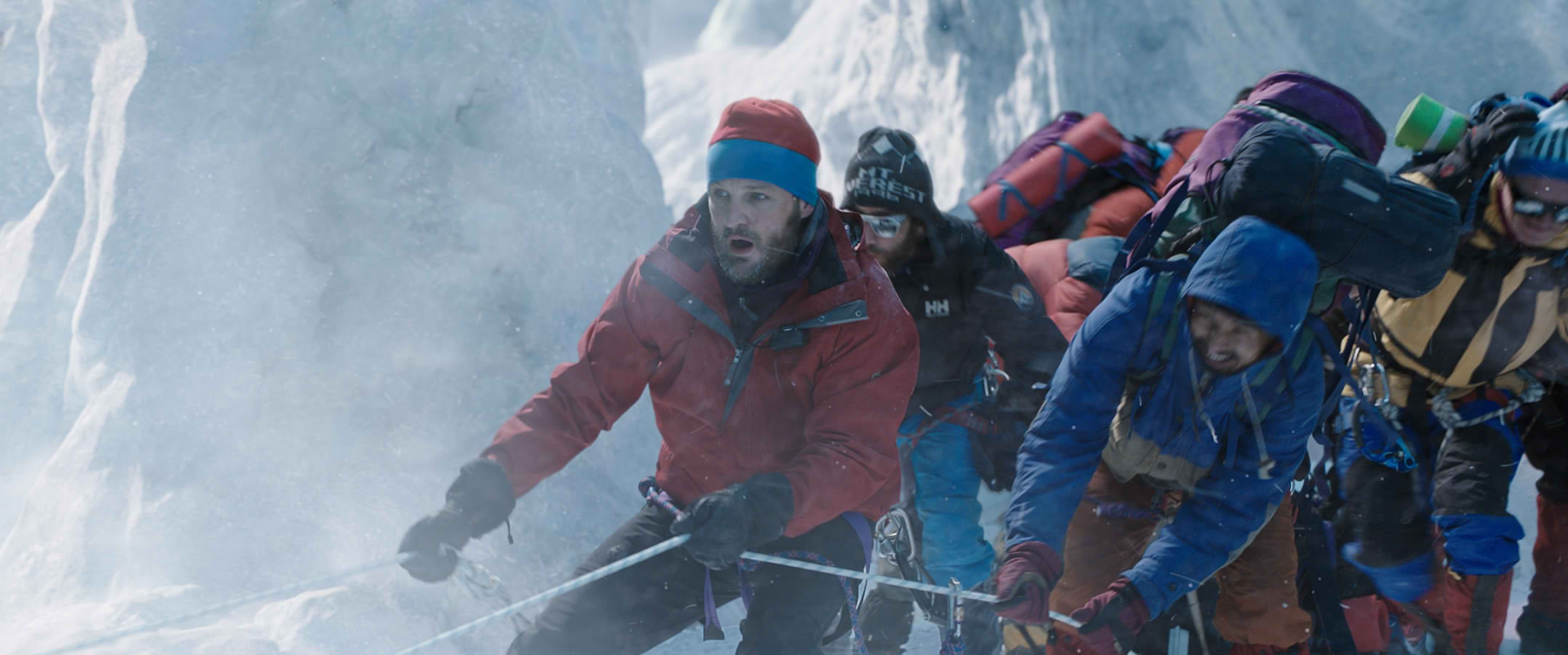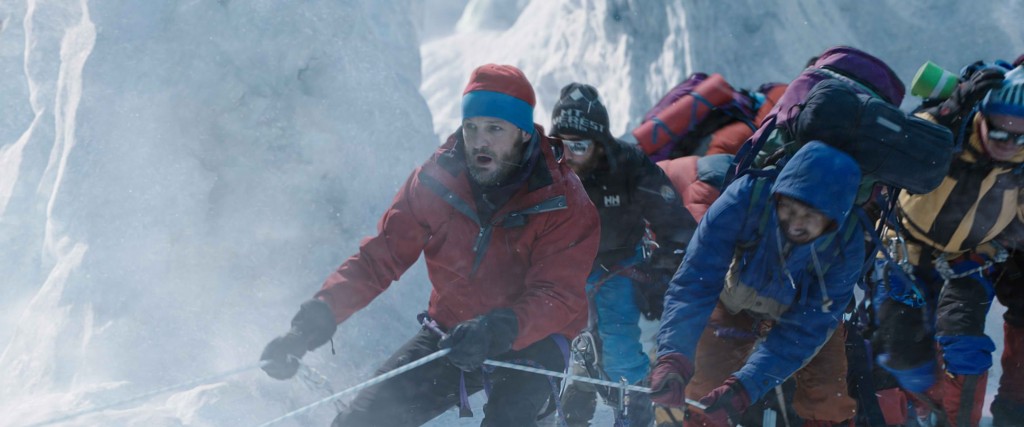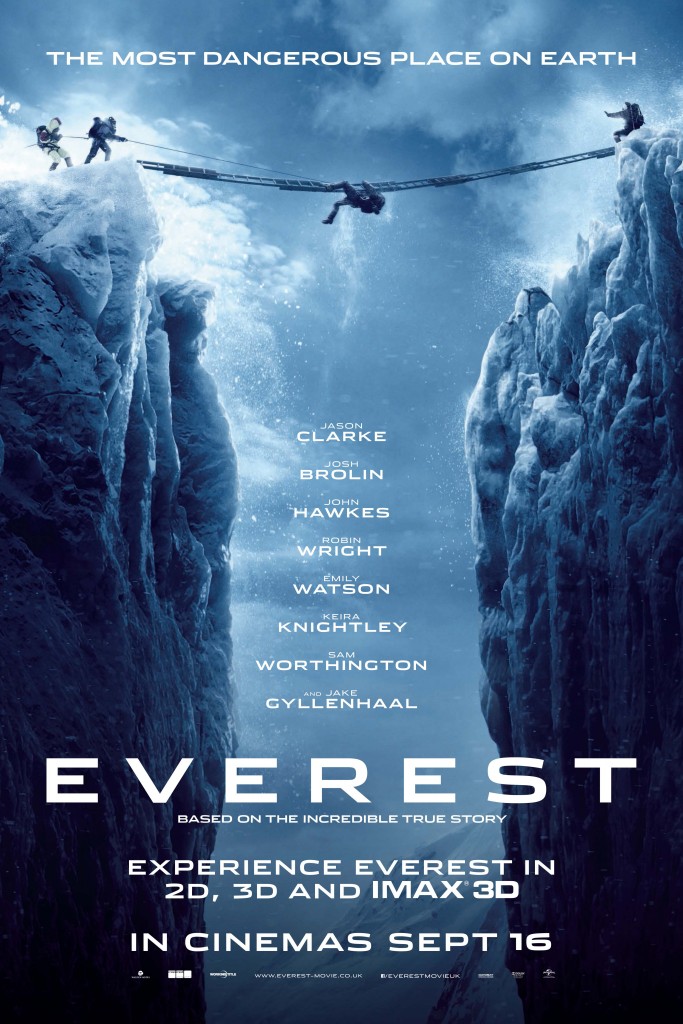The summit of Mount Everest, the mightiest mountain on Earth, is more than five miles above sea level, close to the cruising altitude of a 747 jumbo jet. Its fearsome and unforgiving peak has hosted thousands of daring climbers who have felt compelled to rise to the greatest challenge in mountaineering.
The tragic events in May 1996 represented, at that time, the deadliest climb in the mountain’s history, and dramatized in Universal Pictures’ upcoming epic adventure “Everest.” The world’s media were transfixed by this story of human endurance, which became the subject of best-selling books and documentaries, often with contradicting accounts of the events.
Producer Tim Bevan first became interested in the story when he read Jon Krakauer’s “Into Thin Air” soon after it was published in 1997. Krakauer, a journalist who had been part of Rob Hall’s Adventure Consultants team on the mountain that May, had first documented the events for an article in Outside magazine. Bevan’s producing partner, Eric Fellner, shared his enthusiasm for the project; they discovered that Universal Pictures, with which Working Title has a long-term distribution agreement, coincidentally owned other properties relating to the events.
These included Beck Weathers’ “Left for Dead: My Journey Home from Everest,” from which the film draws inspiration, as well as the transcript of the final satellite phone conversation between Rob Hall and his wife, Jan Arnold. While the families of the climbers involved had remained mostly quiet about the tragic events over the years, they maintained an ongoing dialogue with the filmmakers, working toward an appropriate time for a feature-film reimagining of the events to be made.
It wasn’t until 2011 that the elements finally started to come together to bring this story to the big screen. Blockbuster film screenwriters William Nicholson and Simon Beaufoy worked to deliver a deeply moving and powerful script, while advances in visual effects meant it would be possible to capture the jaw-dropping conditions that day without putting the cast or crew at risk.
Director Baltasar Kormákur admits that the opportunity to direct “Everest” appealed to him on a profound level: “I wanted to make it in the most authentic way possible. To take people on a journey up Everest and show them the mountain in a way that hasn’t been possible until now…and at the same time create intimacy between the characters that is all too rare in big studio films.” He pauses, believing this story is both one of achievement and a cautionary tale. “Everest is a metaphor for any kind of ambition, and anyone who has ambition needs to balance that with his or her family life. There’s the mountain and there’s home, and the distance between the two is immense, pulling in two opposite directions.”
Kormákur immersed himself in discovering what happened that day on the world’s highest mountain, recognizing the immense challenges of the project, both emotionally and physically. “The story is so well-known and well-documented,” says Kormákur. “But there are many different versions, and they often contradict each other.”
As he worked with his fellow producers and with the writers, Kormákur insisted that they shape the film’s story in a way that respected all concerned. It was of paramount importance that they honor those eight people whose lives were lost on the mountain that May, and to tell a balanced story without looking to justify or criticize any of the decisions made before or after the ascent and descent.
Kormákur’s research and preparation for what he describes as “the hardest thing I’ve done in my life” began in earnest with his reading every book and document about the events that he could get his hands on. He had countless conversations with people who had climbed Everest, trying to understand the mind-set of a climber. He took a trip to Everest early in preproduction, then traveled to New Zealand to meet the families of those involved.
Kormákur reflects on what he learned: “I was incredibly grateful to have the opportunity to be on Everest, to get to travel, to get to be in a part of the world, which I honestly never thought I would. I always dreamt of Everest, but it wasn’t part of my journey.”
Opening across the Philippines on Sept. 16, 2015, “Everest” is distributed by United International Pictures through Columbia Pictures. Experience “Everest” in IMAX 3D and on premium large-format 3D screens, as well as in standard 2D and 3D.





